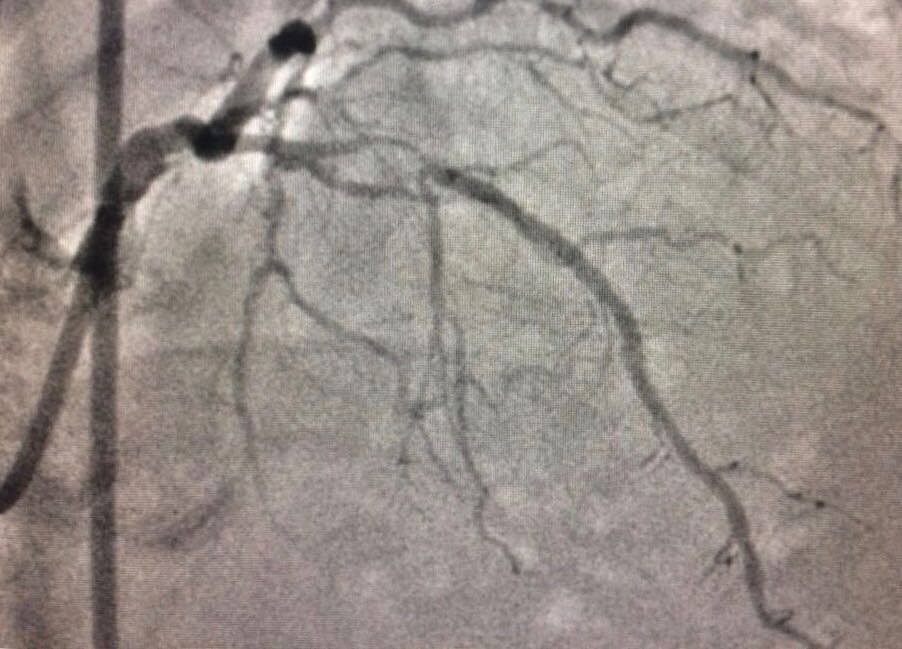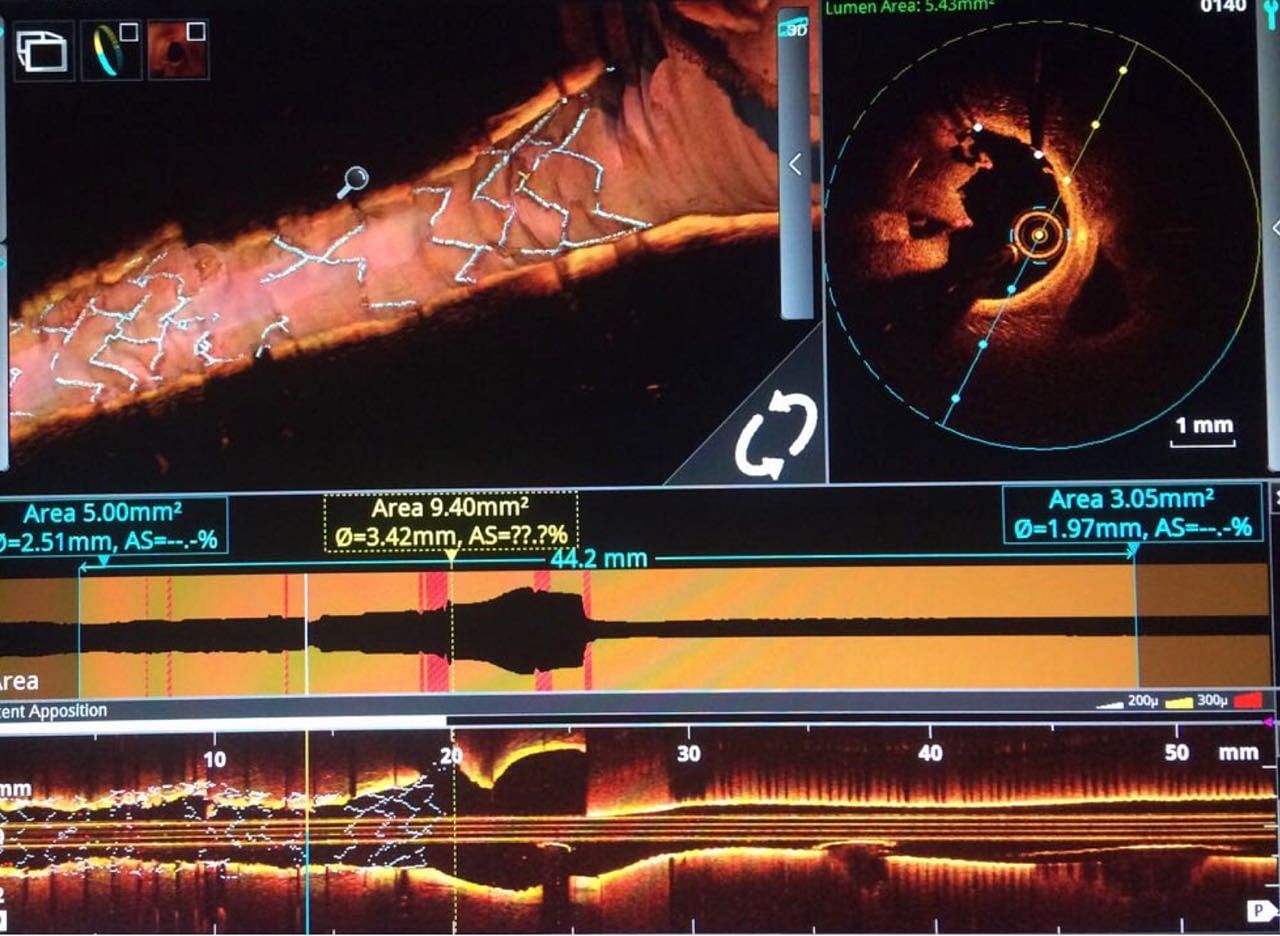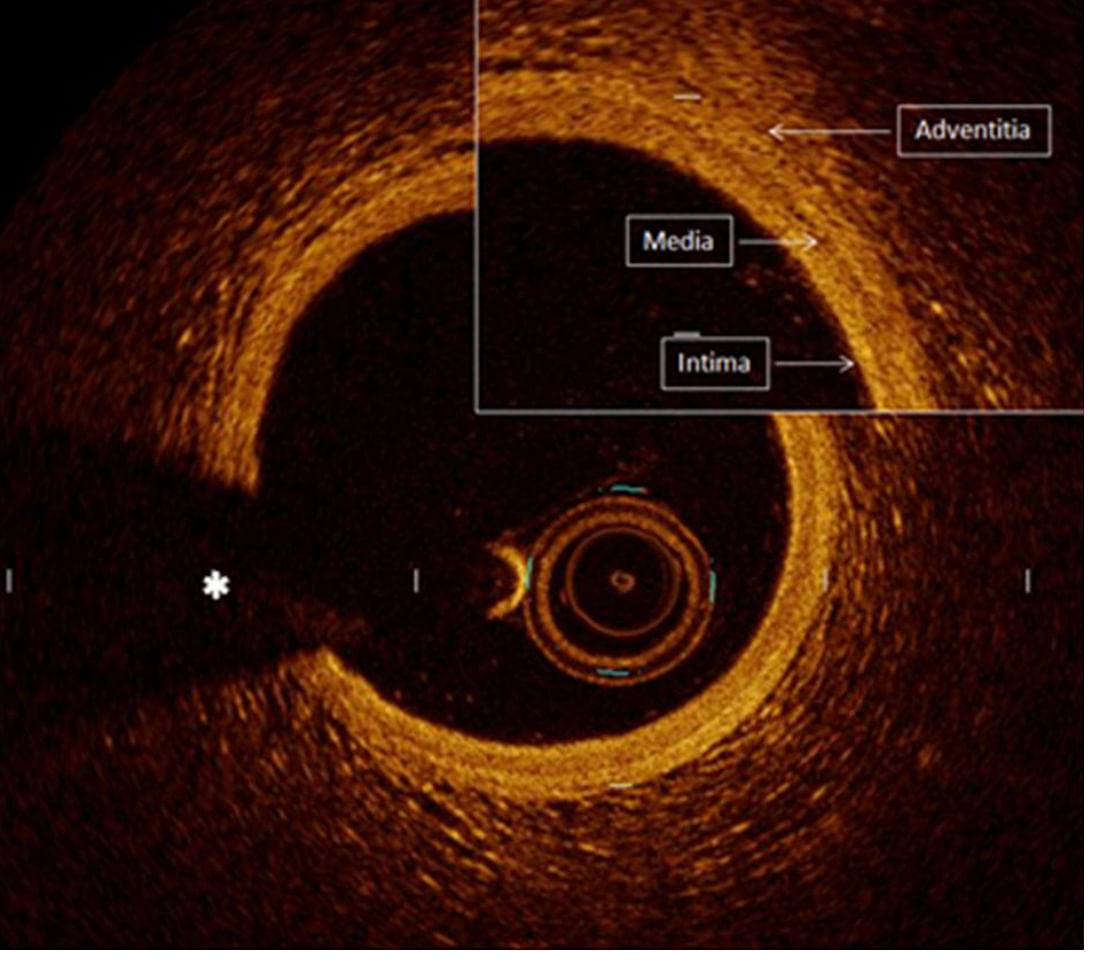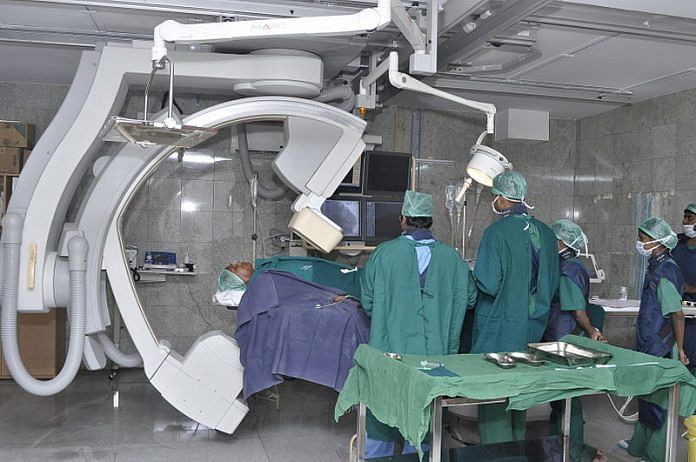The procedure, called OCT, is done in addition to a normal angiography, and produces a three-dimensional image from inside the heart.
New Delhi: A diagnostic marvel is allowing doctors to peep inside arteries and predict the possibility of heart attacks in patients.
The procedure, Optical Coherence Tomography (OCT), is carried out by inserting a camera-like device which produces three-dimensional images. It is becoming a popular tool among Indian doctors to view the minute details inside the most delicate parts of the human heart.
What is it useful for?
OCT is done in addition to a normal angiography among patients who have blockages and are in need of angioplasty. Normal angiography is done by injecting a radio dye inside the arteries to detect a plaque or blockages, while angioplasty refers to inserting stents that free these arteries from obstruction. OCT, on the other hand, uses infra-red light-based technology.

Dr Nishith Chandra, director of interventional cardiology at Delhi’s Fortis Escorts Heart Institute explained why OCT is a game-changer in treating heart ailments.
“The major drawback of angiography was its two-dimensional representation of a three-dimensional object. It often missed the important details about the lesion, the plaque which causes the heart-attack. Sometimes, angiography done on a person who had already had a heart attack showed a clear artery. One couldn’t know the reason for why the heart attack occurred,” Chandra told ThePrint.
“To know the reason, there was a need for intensive investigation and detailed analysis of coronary angiograph. OCT has fulfilled that need.”
Doctors define OCT as a high-resolution camera inside the heart’s arteries, which are only two millimetres wide.

“OCT uses a fibre-optic catheter to create cross-sectional images of the artery lumen and wall. It is done while the heart is beating. It gives a high-resolution picture with an effect of showing even a 10 micron tissue,” Chandra explained.
Besides giving measurements about the size and length of stents, OCT allows doctors to predict possible heart attacks in high-risk patients.
“We can predict whether the person can have a heart attack in future. It helps us identify the plaque which is vulnerable to rupture. After a certain age, everybody develops plaque, which is built by fats, cholesterol and other lipids in the arteries, but not everyone gets a heart attack. Ruptured plaque causes cardiac arrest in a person, and OCT can detect when plaque is nearing rupture,” Chandra said.
Gaining popularity
Health experts say that after diabetes, India is now becoming the coronary heart disease capital of the world. Angioplasties are common, and according to Dr Naveen Bhamri, head of the cardiology department at Max Hospital, Shalimar Bagh, New Delhi, OCTs will follow suit.

“In Japan, no angioplasty is done without the OCT. After the angiogram, if there is a block, we have to go for angioplasty, but in many cases where OCT is done, the patient might not need a stent. After two to three years, every cardiologist in India will opt for an OCT,” Bhamri, who has trained in OCT from the Gifu Heart Centre, Japan, said.
“Three years ago, there were hardly 10-15 centres which used OCT in India. But now, there are more than 100 hospitals taking to it.”
Premier government healthcare institutes such as the All India Institute of Medical Sciences and Safdarjung Hospital also have the OCT facility, while Ram Manohar Lohia Hospital is in talks with an American company to buy the console, which costs around Rs 1.2 crore each.
A way to make money?
Dr Rakesh Yadav, professor of cardiology at AIIMS, agrees that OCTs give accurate measurements of the coronary artery, check if the stent is deployed properly and finds plaque vulnerability. However, he warns that this useful tool is being put to unnecessary use.
“We seldom use it. The catheter costs about Rs 70,000; it is a very expensive procedure. Over the last few years, it has become popular because the government has capped stent prices, and thus, medical practitioners are charging patients through this,” Yadav told ThePrint.
Each OCT in a private hospital costs between Rs 50,000 to 80,000 on an average. A normal angiography costs Rs 10,000 to 18,000.






